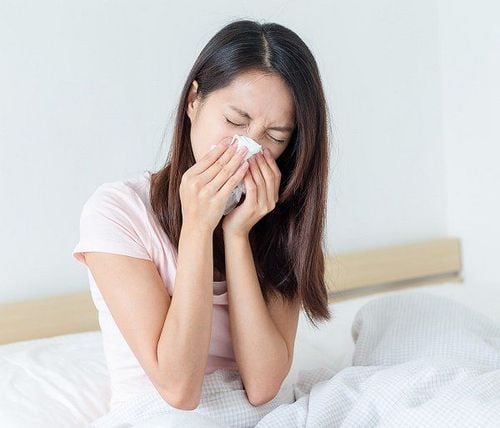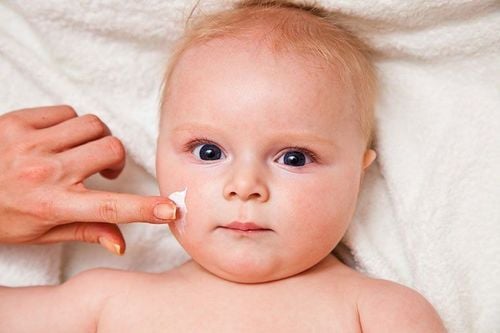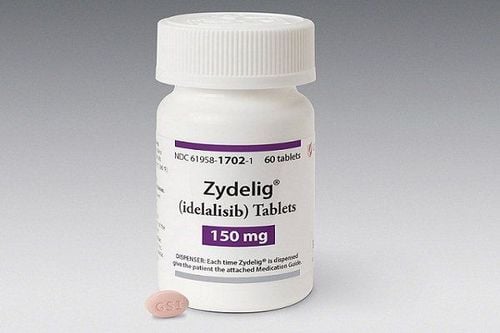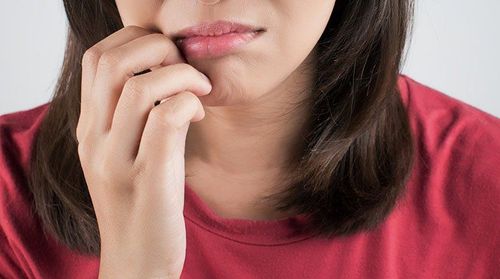This is an automatically translated article.
Food coloring has the function of making food bright, eye-catching and attractive. In fact, the demand for this substance over the past 50 years has increased by 500% and children are the main users. Some evidence suggests that food colorings have serious health effects, such as hyperactivity in children and cancer.
1. What is food coloring?
Food colorings are chemical substances developed to add value to the appearance of foods. Food colorings have been used to improve the color of foods for centuries, but the first artificial food colorings were created in 1856 from coal tar. Today, colorants are made from petroleum and hundreds of different types of colorants have been developed. However, most of them have been found to be toxic, with only a very small number of artificial coloring agents recommended for use in food.
Food manufacturers often prefer to use artificial colorants over natural colorants because they are available in some foods because artificial colors make foods more colorful ( such as beta carotene and beetroot extract).
The safety of artificial food coloring is still very controversial. All artificial colorings being used in foods are subject to toxicity testing in animal studies. The Food and Drug Administration (FDA) and the European Food Safety Authority (EFSA) have concluded that food coloring does not pose a significant health risk. However, the conclusions of these two agencies do not capture everyone's agreement. In fact, some food colorants are considered safe in one country but are banned for consumption in another. That makes it extremely difficult to assess the safety of food colorings.

Chất tạo màu thực phẩm nhân tạo
2. Types of colorants in food
The following types of food colorings have been approved for use by both the Food and Drug Administration (FDA) and the European Food Safety Authority (EFSA).
Red number 3 (Erythrosine). This is a cherry-red substance commonly used in candy, popsicles, and cake decorating gels. Red number 40 (Allura Red). It has a dark red color used in sports drinks, candies, condiments, and cereals. Yellow No. 5 (Tartrazine). It has a lemon yellow color found in candies, soft drinks, chips, popcorn, and cereals. Yellow number 6 (Sunset Yellow). It is a yellow-orange color commonly used in candies, sauces, baked goods and preserved fruit. Blue number 1 (Brilliant Blue). It is the green color used in ice cream, canned beans, packaged soups, and Indigo Blue popsicles. It has a gorgeous blue color commonly found in candies, ice cream, cereals and snacks. The most common colorants are red 40, yellow 5, and yellow 6. These three make up 90% of all colorants used in the US.
Some other colorants are approved in some countries but banned in others. For example: green number 3 is FDA approved for use in food but is banned in Europe. Quinoline yellow, carmoisine and magenta are examples of food colorings that are allowed in the EU but banned in the US.

Màu đỏ số 40 là một trong những màu được sử dụng nhiều nhất
3. The relationship between artificial colors in food and health
3.1 Food Colorants and Hyperactivity in Sensitive Children In 1973, a pediatric allergist declared that hyperactivity and learning problems in children were caused by food colorings. artificial products and food preservatives. Similarly, clinical studies have shown that removing artificial food colorings from the diet along with the preservative sodium benzoate significantly reduces symptoms of hyperactivity in children. Or another study also showed that food coloring along with sodium benzoate increased hyperactivity in children 3, 8 and 9 years old.
Additionally, research on Tartrazine, also known as yellow number 5, has also been linked to behavioral changes including: irritability, restlessness, depression, and trouble sleeping.
3.2. Food Colorants and Cancer The safety of artificial food colorings is controversial. However, the studies evaluating the safety of this substance have been long-term animal studies. When carrying out studies using colorant No. 1 blue, No. 40 red, No. 5 yellow and yellow 6, the results did not find any evidence of carcinogenic effects. However, other coloring agents may be more involved.
An animal study with blue
2 showed a significant increase in brain tumors in the high-dose group compared with the control group. But the researchers still concluded that there wasn't enough evidence to determine whether blue
2 causes tumors. Furthermore, other studies of blue
2 found no adverse effects.

Chưa có kết luận về việc màu xanh số 2 gây ung thư não
Erythrosine, also known as
3 red colorant, is the most controversial. In a study in male rats, the third red pigment, erythrosine, was found to be associated with an increased risk of thyroid tumors. Based on the results of this study, the FDA issued a partial ban on erythrosine in 1990, but later lifted the ban. Because when they looked at the study results, they concluded that the thyroid tumors were not directly caused by erythrosine. In the US, red colorant 3 has mostly been replaced by red number 40, but it is still used in cherries, ice cream, and marshmallows.
Red color 40, yellow 5 and yellow 6, Benzidine, 4-aminobiphenyl and 4-aminoazobenzene are thought to be potential carcinogens. However, these colorants are still allowed because at low doses they are considered safe. Therefore, more research is still needed to evaluate the health effects of food coloring agents, especially in children.
3.3. Food colorings and allergies Some food colorings can cause allergic reactions. In many studies, yellow pigment
5 - also known as tartrazine - has been shown to cause symptoms of urticaria and asthma. At the same time, people who are allergic to aspirin also seem to be more likely to be allergic to yellow number 5.
In another study done in people with chronic urticaria or swelling it was found that 52% had Allergic reactions to artificial food colorings.
Most allergic reactions will not be life or health threatening. However, if allergy symptoms are present, artificial food colorings should be eliminated from the diet.
Red No. 40, Yellow No. 5 and Yellow No. 6 are among the most commonly used artificial food colorings and also the three most likely to cause allergic reactions.

Chất tạo màu vàng số 5 - tartrazine có thể gây dị ứng
4. Some recommendations on food coloring
The view that artificial food colorings are carcinogenic. However, the evidence to support this claim is still not strong enough. Furthermore, some food colorings can cause allergic reactions in some people but in others there may not be any allergic symptoms. Or some studies have found that food colorings increase children's hyperactivity...
The reason food colorings are used in food is to increase the attractiveness of foods. But there is absolutely no nutritional benefit from these colorants. However, there is currently not enough evidence to suggest that people should avoid artificial colorings altogether.
Current reality shows that unhealthy processed food sources are the biggest source of food coloring. It can negatively affect health. Therefore, eliminating processed foods from the diet and using healthy foods will help improve health and significantly reduce the amount of colorants in food.

Ưu tiên sử dụng chất tạo màu thực phẩm từ tự nhiên
Some foods are free of food colorings:
Meat and poultry: Raw chicken, beef, pork and fish. Nuts and seeds: Unflavored almonds, macadamia nuts, cashews, pecans, walnuts, sunflower seeds. Fresh fruits and vegetables: All fresh fruits and vegetables. Grains: Oats, brown rice, quinoa, barley. Legumes: Black beans, kidney beans, chickpeas, navy beans, lentils. If you really want to avoid all colorants in your diet, always read the label before eating a food. Because, there are still some seemingly healthy foods that contain artificial food colorings.
In order to improve service quality, in addition to bringing a system of modern and standard medical machines into medical examination and treatment, Vinmec International General Hospital also offers many perfect medical services that bring many benefits to patients. convenience for customers. Especially with a team of qualified and experienced medical doctors who are always ready to examine, treat and advise, customers can rest assured and choose the examination service at Vinmec.
Customers can directly go to Vinmec Health system nationwide to visit or contact the hotline here for support.
References: healthline.com, health.clevelandclinic.org













